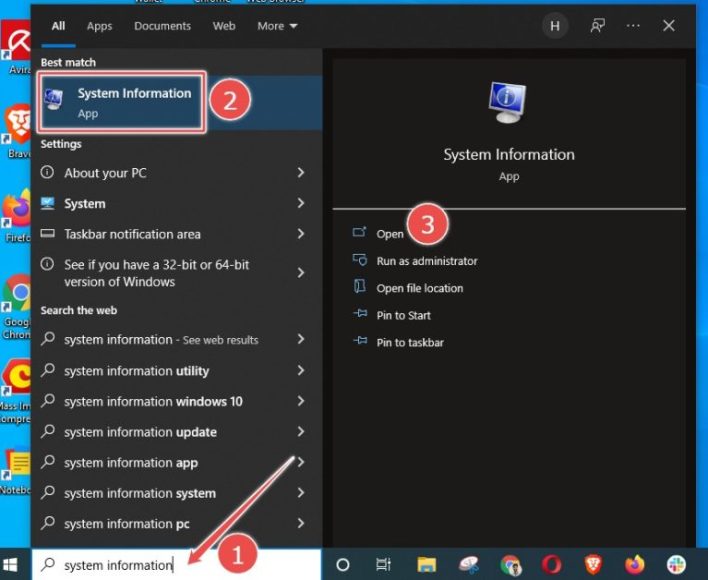[ad_1]
This is a no-fuss educational to allow you to exchange BIOS Mode from Legacy to UEFI in Windows 10. We promise it received’t take various mins. 😄
Basic Input/Output System (BIOS) is the very first thing you get up every time you energy to your laptop. It permits for a correct handshake between the working device and the hooked up {hardware}. And from there on, you get started the use of your laptop.
BIOS (aka Legacy or Legacy BIOS) was once excellent at what it did from 1975 till 2020; the 12 months chipmakers slowly began to migrate to an effective selection: UEFI (Unified Extensible Firmware Interface).
The improve guarantees:
- Faster boot occasions and device efficiency
- Support to laborious disks (and walls) greater than 2.1 TB
- More safety and Advanced Graphical User Interface
- Boot Support for each GPT (GUID Partition Table) and MBR (Master Boot Record) (by way of compatibility mode)
In addition, UEFI’s skill to use the GPT partition desk manner no sensible limitation at the collection of walls.
UEFI has many benefits over Legacy BIOS like:
Performance Boost
Short Booting Times
User-Friendly Interface
Supports larger Hard disks and Partitions than 2.1 TB
Consecutively, that is extra protected and makes your device carry out higher.
How to Change BIOS mode from Legacy to UEFI in Windows 10
This educational is split into two portions:
- Converting your laborious disk from MBR to GPT
- Turning on UEFI from the BIOS setup (that’s up to you)
The 2nd phase is particular to the producer. So, take a look at prematurely and get at ease ahead of going forward with the primary. Chances are, the choice for UEFI received’t be in the BIOS if you happen to’re the use of a actually outdated PC.
But for fresh ones, you’ll have this feature to transfer to the UEFI BIOS.
Before beginning with this information, be certain:
- You have a complete backup of your device
- You don’t have greater than 3 walls
- Device encryption products and services like BitLocker is became off
And yeah, don’t trouble reading any more if you happen to’re on Windows 11. In that case, your PC will have to already be operating on UEFI. However, that is crucial merchandise at the tick list for Windows 10 customers who want to improve to Windows 11.
Let’s get started with the primary direction.
Check the present standing.
Type System Information in the Search bar and click on open the proper outcome.

There you’ll be able to test the BIOS Mode is appearing Legacy:

You too can ascertain this with the disk sort. Press Windows+R, sort diskmgmt.msc, and click on OK.
This will open the Disk Management console. Follow the stairs in the given video and check that you’ve Master Boot Record (MBR) in the Partition Style discussed below the Volumes tab.
So now that we all know we have now an MBR disk, we will be able to take a look at to convert it to GPR. This is finished with a easy device, MBR2GPT, which Microsoft has shipped with Windows 10 model 1703 or later.
You can test your Windows model by means of typing <robust>winver</robust> in the Run (Windows+R).

As we’re eligible to use that device, let’s head against the command suggested.
MBR to GPT Conversion
Open the command suggested with the administrator privileges. For this, sort cmd, then click on the Run as administrator in the precise panel.

Afterward, input mbr2gpt /validate /allowFullOS in the command suggested:

Check that the validation is a success. Go via this solution from the Microsoft group if you happen to’re getting Disk format validation failed.
After a success validation, sort mbr2gpt /convert /allowFullOS and hit input:

The Failed to replace ReAgent.xml is an error particular to my device. You would possibly not get it, and this received’t have an effect on the conversion procedure even supposing it’s there.
Conclusively, the method is whole, and we’ve modified BIOS Mode from Legacy to UEFI.
And this screenshot confirms that:

Additionally, the disk control gear display the partition taste is GUID Partition Table (GPT). This procedure created a 100 MB EFI partition from the primary disk. You can validate this by means of noticing the exchange in the scale of the primary partition which was once diminished from 458.35 GB to 458.25 GB.

But your laptop received’t boot after this since the closing step is composed of adjusting the BIOS settings from Legacy to UEFI. As already said, this is determined by your PC producer or to your motherboard logo if you happen to’ve were given an assembled PC.
Conclusion
While it was once simple to convert BIOS mode from Legacy to UEFI in Windows 10, a median consumer would possibly not want it. So make sure to actually want to do that ahead of going via all this bother.
If it ain’t broke, don’t repair it!
Instead, what’s value solving are the hearts of numerous other folks made ineligible from getting Windows 11. 😉
So take a look at Geekflare’s information to set up Windows 11 on unsupported PCs.
[ad_2]




